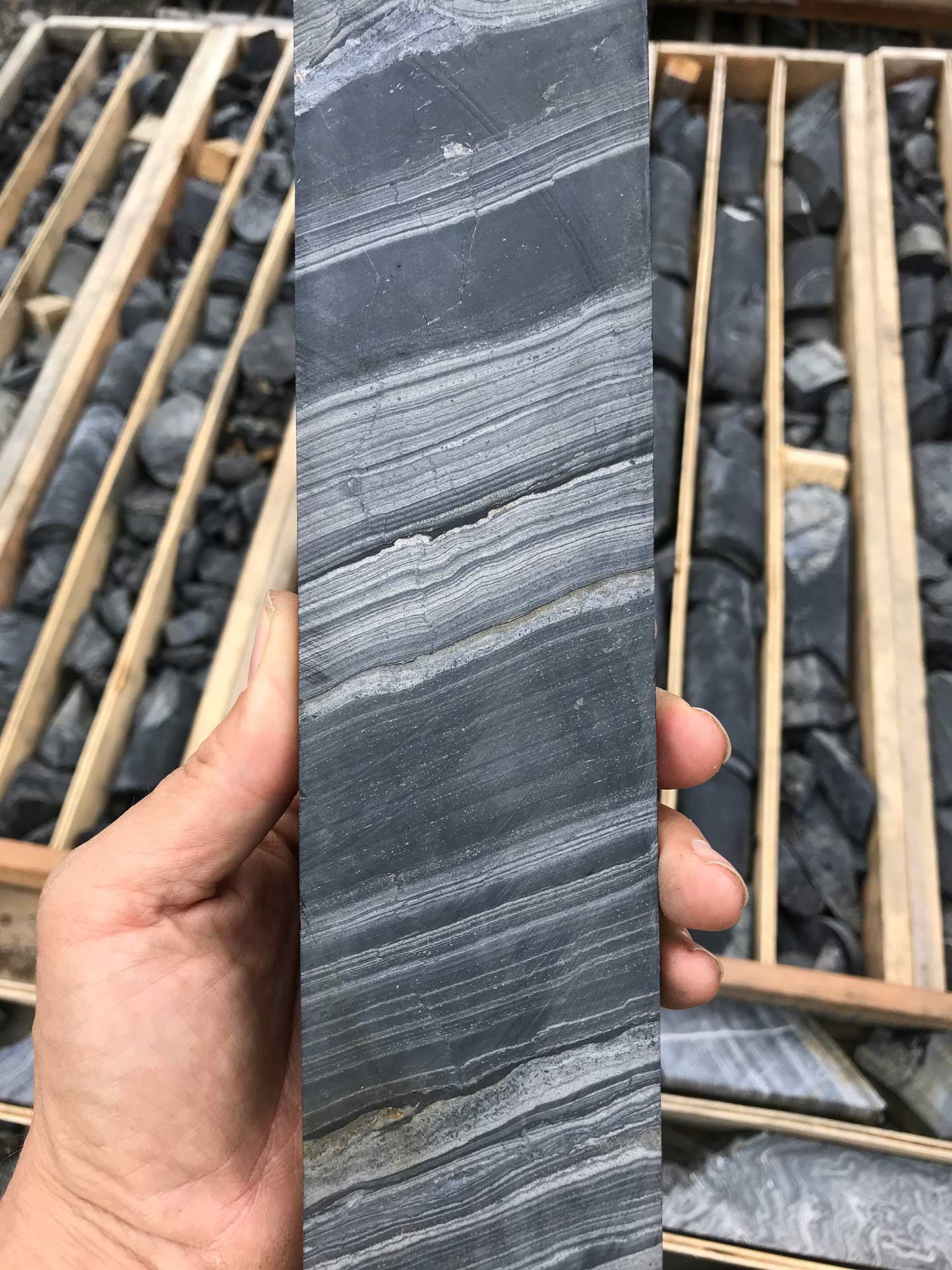Macmillan Pass
The Macmillan Pass project consist of several large zones of shale-hosted, lead-zinc-silver deposits also know as sedimentary exhalative (SEDEX) deposits, such as the Tom and Jason deposits.
At the Tom and Jason deposits, both high grade, feeder-proximal mineralization and medium grade, distal mineralization are present, where the high grade feeder-proximal mineralization consists of massive galena, sphalerite, pyrite, and pyrrhotite and the medium to low grade, distal mineralization consists of laminated sphalerite, galena, and barite. The current resource for the Tom and Jason deposits is:
• 1.21 Mt Indicated @ 9.61% Zn equivalent.
• 6.59% Zn, 2.48% Pb, 21.33 g/t Ag
• 39.47 Mt Inferred @ 10.00% Zn equivalent.
• 5.84% Zn, 3.14% Pb, 38.15 g/t Ag
The Tom and Jason Deposits occur in the Paleozoic Selwyn Basin, and are hosted in the Late Devonian Portrait Lake formation of the Earn Group. The deposits occur at or near the contact between the Fuller Lake member (massive carbonaceous mudstones) and the Macmillan Pass Member (massive to laminated carbonaceous mudstone with narrow bands of siltstone and thicker horizons of coarse sandstone and conglomerate). The deposits form large tabular bodies up to 20-30m thick and are generally conformable with stratigraphy. Mineralization tends to be high grade and lead+silver rich within feeder proximal zones and tends to be zinc (+barite) rich and lead+silver poor in the more distal environments.
The project is located approximately 370km north west of Whitehorse, Yukon Territory, Canada and is accessible from Ross River via the North Canol highway and exploration roads.





